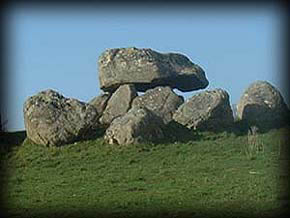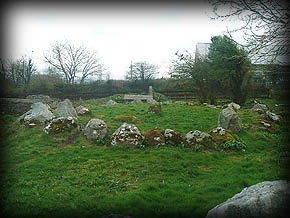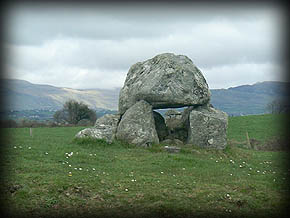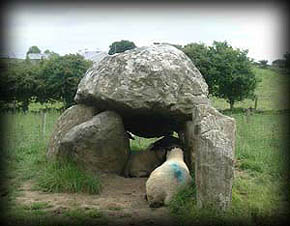I found the best way to visit this site was to go to the visitor centre first and then go on your own tour of the surrounding fields. The tombs are known by numbers assigned to them by George Petrie in 1837. Right is a boulder circle with a dolmen in the centre, known as tomb 1, this tomb is on a slightly raised platform and is over forty feet in diameter it also has an inner circle consisting of smaller stones.
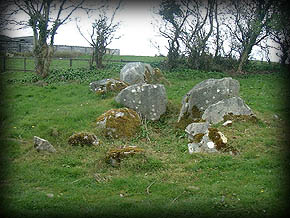
Tomb 2
Almost all the tombs in Carrowmore that are shown on this web site were originally passage tombs, all that remains of most of them is a boulder circle, some with dolmens or chambers intact others without, some tombs have only the cromleac remaining. All that remains of tomb 2 are the stones pictured left, this tomb was over fifty feet in diameter and lies about twenty feet East of tomb 1.
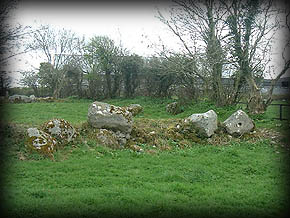
Tomb 3
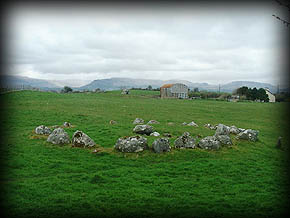
Tomb 4
Tomb 4 pictured left was excavated in 1979 and has a radiocarbon date of 4,600 BC making it the oldest tomb on the site. The tomb is over forty feet in diameter and the boulder circle has some twenty eight stones. At the centre of the tomb is a cromleac but the capstone has been displaced. There is a double cist at the centre of the tomb, when excavated this tomb produced more finds than any other tomb at Carrowmore.
The tomb on the right is tomb 5 and is a fine example of what most of the dolmens would of looked like, it has a capstone supported by five supporting stones about 1.4 metres in height. The boulder circle was also around forty feet in diameter but at present only one of the kerb stones remain. If you look through the chamber you will just make out tomb 7 in the distance.
Tomb 6 is now completely destroyed but was also a dolmen circle type, I believe the cromleac was destroyed around 1815.
Tomb 5
The only thing remaining of tomb 13 is the dolmen pictured right, it also is an excellent example and has a huge capstone resting on six stones. There are other stones next to the dolmen on the western side which may have belonged to the passage.
Tomb 13
